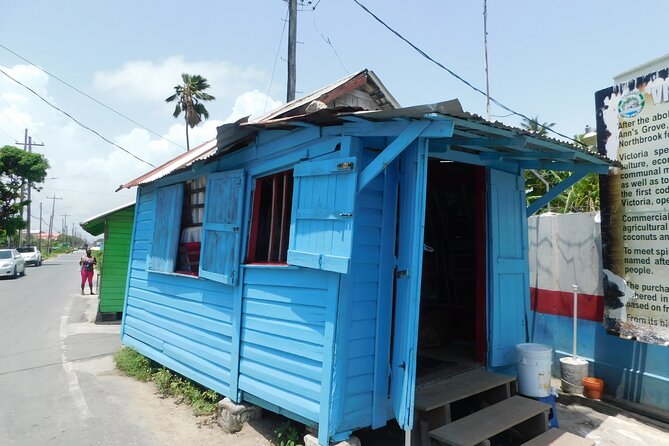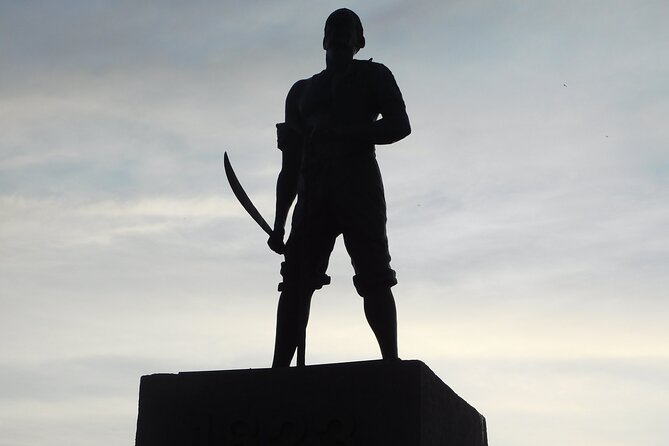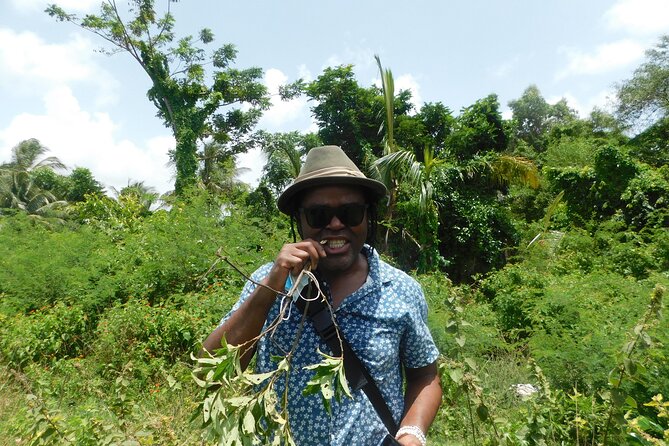Guyana’s complex history of slavery and emancipation offers a profound window into the nation’s cultural evolution. This day tour explores the lasting impact of the plantation system, from the Emancipation Monument’s solemn tribute to the bustling Stabroek Market’s enduring legacy. Guided by poignant narratives, visitors engage with the resilience of the Guyanese people and uncover the enduring legacies that continue to shape the country’s identity. What unfolds is a thought-provoking journey that invites deeper reflection on the intersections of power, resistance, and the human spirit.
Key Points
- Tour highlights the history of slavery in Guyana, from the brutal conditions faced by enslaved Africans to the Demerara Rebellion and the abolition of slavery.
- Visits to historical sites like the Stabroek Market and the Emancipation monument provide insight into Guyana’s transition from slavery to emancipation.
- Engaging with personal narratives of enslaved individuals humanizes the experience of bondage and fosters a deeper understanding of the struggle for freedom.
- Exploration of Guyanese resistance and resilience, including organized uprisings and the formation of maroon communities, showcases the enduring spirit of the Guyanese people.
- The tour examines the lasting legacies of the plantation system, including persistent inequalities and the blending of cultural influences that form Guyana’s vibrant identity.
Historical Context of Slavery in Guyana

Guyana’s history is deeply intertwined with the legacy of slavery. The country was colonized by the Dutch, British, and French, who brought millions of Africans to work on sugar plantations.
Slavery was a brutal system, with enslaved people facing inhumane conditions and harsh punishments. Despite this, the enslaved people resisted and fought for their freedom, culminating in the Demerara Rebellion of 1823, one of the largest slave uprisings in the region.
The abolition of slavery in 1838 marked a significant turning point, but the effects of this legacy continue to shape Guyana’s society and culture today.
You can also read our reviews of more tours and experiences in Georgetown.
Emancipation and Its Aftermath

The abolition of slavery in 1838 marked a pivotal moment for Guyana, as the formerly enslaved people navigated the complexities of their newfound freedom.
Though emancipation brought an end to the oppressive system, it didn’t immediately resolve the social, economic, and political challenges faced by the ex-slaves. Many struggled to establish themselves as independent landowners or find employment, as the plantation economy remained largely unchanged.
The transition was further complicated by the influx of indentured laborers from India, who were brought in to replace the freed slaves on the sugar estates.
This period saw the gradual evolution of Guyana’s diverse cultural landscape, as the nation grappled with the legacy of slavery and its aftermath.
Exploring Monuments and Landmarks

Exploring the nation’s monuments and landmarks offers visitors a window into Guyana’s complex history of emancipation and slavery.
The tour includes a visit to the iconic Stabroek Market, where a plaque commemorates the abolition of slavery in 1838.
At the National Park, the emancipation monument stands as a poignant reminder of the struggle for freedom.
The tour also visits St. George’s Cathedral, a stunning example of Gothic architecture that served as a hub for the abolitionist movement.
Through these sites, travelers gain a deeper understanding of Guyana’s journey from a slave-based economy to a nation that celebrates its emancipation.
Narratives of Enslaved Individuals
Throughout the tour, travelers have the opportunity to hear the powerful narratives of enslaved individuals who experienced the harsh realities of bondage in Guyana.
Guides share the personal stories of men, women, and children who endured the brutalities of the plantation system, shedding light on their struggles for freedom and dignity.
Visitors learn how enslaved Guyanese resisted oppression through various means, including organized uprisings and acts of defiance.
These vivid accounts provide a poignant window into the lived experiences of the enslaved, humanizing a dark chapter in Guyana’s history and fostering a deeper understanding of the country’s journey towards emancipation.
Guyanese Resistance and Resilience
Alongside the stories of enslavement, the tour examines the powerful narratives of Guyanese resistance and resilience.
Visitors learn about the heroic acts of enslaved individuals who refused to submit to the oppressive system, staging uprisings and escaping to form maroon communities.
The tour highlights the enduring spirit of the Guyanese people, showcasing how they maintained their cultural traditions and fought for their freedom, even in the face of tremendous adversity.
Through this lens, the tour provides a comprehensive understanding of the complex history of emancipation and the ongoing legacy of slavery in Guyana.
- Cheddi Jagan Airport (Geo) to Georgetown Hotels – Round-Trip Private Transfer
- Day Tour Into the Story of Emancipation and Slavery in Guyana
- One Cent Magenta Stamp Tour With Lunch
- Guyanas City Center Tour With Lunch
- 8-Day Rupununi Savanna and Kaieteur Water Falls Adventure From Georgetown
- 6 Best Tours In Georgetown
Legacies of the Plantation System
The tour’s examination of the legacies of Guyana’s plantation system reveals the profound and lasting impact it had on the country’s social, economic, and cultural fabric. The plantation economy created stark racial and class divisions, with a small elite of plantation owners controlling land and resources, and the majority of the population relegated to lives of servitude and hardship. This legacy can be seen in the country’s persistent inequalities, with marginalized communities still grappling with the effects of the plantation system’s exploitative practices.
| Legacies of the Plantation System | ||
|---|---|---|
| Social | Economic | Cultural |
| Racial divisions | Wealth inequality | Language diversity |
| Class stratification | Land ownership | Religious syncretism |
| Entrenched poverty | Monoculture crops | Artistic expression |
| Limited social mobility | Dependence on exports | Cuisine traditions |
Cultural Preservation and Adaptation
Guyana’s cultural heritage has proven remarkably resilient in the face of the plantation system’s profound impact.
Despite centuries of colonial rule and the disruption of traditional ways of life, Guyanese communities have adapted and preserved their unique cultural identities.
This can be seen in:
-
The continued practice of traditional art forms, such as music, dance, and craftsmanship.
-
The preservation of indigenous languages and oral traditions.
-
The adaptation of religious and spiritual practices to new circumstances.
-
The blending of diverse cultural influences into a vibrant, syncretic Guyanese identity.
This cultural adaptability has been a crucial aspect of the country’s emancipation and post-slavery experience.
Significance of the Tour Experience
The tour into Guyana’s emancipation and slavery story offers travelers a powerful opportunity to engage with the country’s complex history.
By visiting historical sites and learning from expert guides, participants gain a deeper understanding of the pivotal events and experiences that shaped Guyana’s past.
The tour’s immersive approach allows travelers to grapple with the nuances of emancipation and slavery, fostering empathy and critical reflection.
This experience not only educates but also encourages dialogue and a shared commitment to acknowledging and honoring the legacies of those who endured the hardships of slavery.
Through this tour, visitors can connect with Guyana’s past in a meaningful and transformative way.
Frequently Asked Questions
What Accessibility Accommodations Are Available for the Tour?
The tour is stroller accessible and allows service animals, but it’s not wheelchair accessible. Infants must sit on laps. Public transportation is available near the meeting point.
Can Children Participate in the Tour Activities?
The tour is accessible to infants, who must sit on laps. Though not wheelchair accessible, strollers are permitted. Children of all ages are welcome to participate in the tour activities.
Is There a Dress Code or Recommended Attire for the Tour?
The tour doesn’t have a formal dress code, but comfortable, weather-appropriate clothing is recommended. Visitors should wear sturdy walking shoes as the tour involves some walking around historic sites.
What Is the Maximum Group Size for the Tour?
The maximum group size for the tour is 20 travelers. According to the tour overview, the tour has a maximum participant limit of 20 people.
Are Any COVID-19 Safety Protocols in Place During the Tour?
The tour’s website doesn’t mention any specific COVID-19 safety protocols. However, it’s always a good idea to check with the tour provider for the most up-to-date information on safety measures they have in place.
Recap
The "Day Tour into the Story of Emancipation and Slavery in Guyana" offers a profound exploration of the nation’s complex past. Visitors engage with significant landmarks, hear poignant narratives, and reflect on the enduring legacies of slavery. This immersive experience fosters empathy and critical understanding, shaping a deeper appreciation for the resilience and cultural evolution within Guyanese society.
